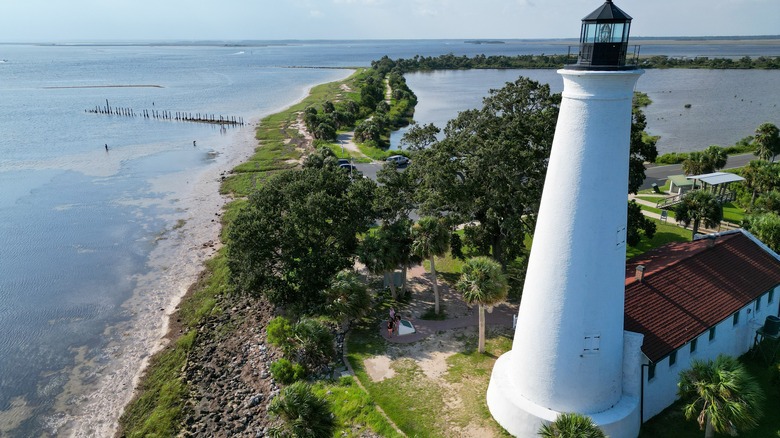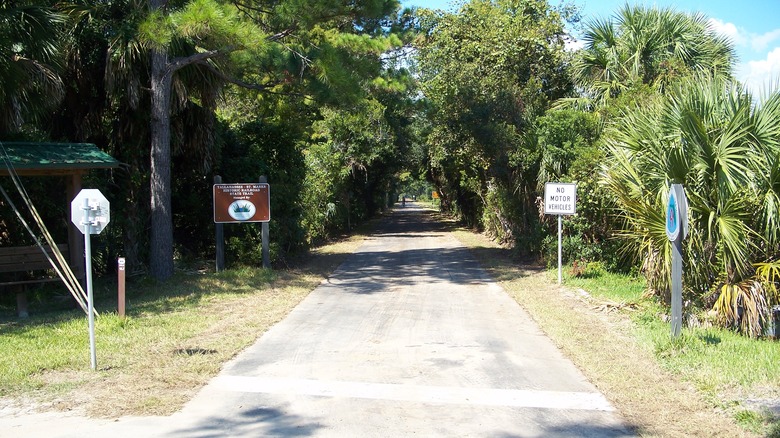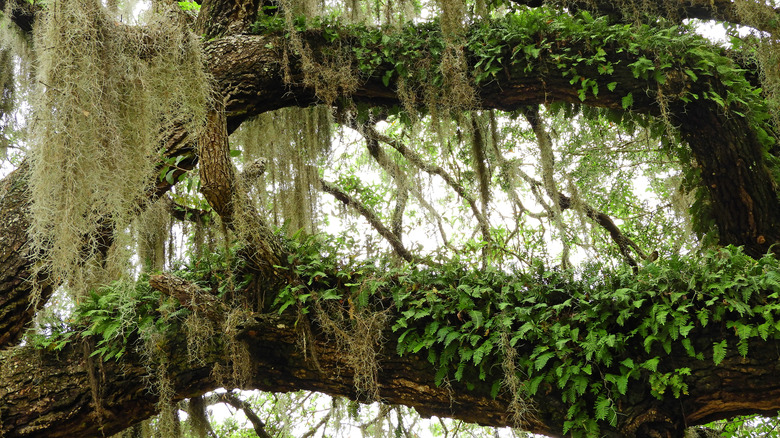Glide Through A Wildlife Refuge And Coastal Town On This Historic Bike Trail In Florida
For almost 150 years, Florida's longest-operating railroad, the Tallahassee-St. Marks Railroad transported cotton and other goods from the state capital to the Gulf Coast for shipment north. You might not know it to look at the railbed today, since it's paved over and now serves as a state bike trail. However, there's a deep historical foundation beneath this 16-mile lane from Tallahassee to the coastal city of St. Marks. It played a pivotal role in one Civil War battle and was also Florida's first "rail- trail."
Cycling the Tallahassee-St. Marks Historic Railroad State Trail allows you to connect with both history and nature. You can enjoy the great outdoors while following the same path trains once took. The state-run trail, which is open from 8 a.m. to sunset every day, begins on Woodville Highway, just south of Capital Circle in Tallahassee. It's about 5 miles from Southwood Golf Club and 10 miles from Tallahassee International Airport. You'll see a sign for the trail from the road, and they have a wooden framework set up as an entrance arch for the Capital Circle Trail Head.
From there, the trail runs parallel to Woodville Highway (a.k.a. State Road 363) most of the way, ending at San Marcos de Apalache Historic State Park. However, if you veer off the trail or double back, you can also visit the nearby St. Marks National Wildlife Refuge. It and its lighthouse inspired Jeff Vandermeer's New York Times-bestselling "Southern Reach" book trilogy and the first novel's movie adaptation.
The Tallahassee-St. Marks Historic Railroad State Trail
Tallahassee and St. Marks can be combined with other Panhandle cities for a road trip along the Emerald Coast, an underrated Florida destination. However, the Tallahassee-St. Marks Historic Railroad State Trail also provides the unique opportunity to cycle from one city to another while surrounded by green trees. You'll have to stop at intersections and observe traffic laws, but the trail is open to walking, running, and rollerblading, not just cycling. Along the way, there are picnic tables, so you can stop and take a break while you save on gas and get some fresh air and exercise.
The trail is bookended by a plaque and signs explaining some (but not all) of its history from the early 1830s onward. Enslaved people in the Antebellum South helped lay the tracks for the original railroad, the first to ever receive a Congressional Land Grant. Some of the plantation cotton from it was transported to New England for use in textiles. In addition to the human cost of this growing industry, mules were used to pull the railroad's initial carriages. It later added trains and became a transport for soldiers and supplies during the Civil War. In 1865, it helped turn the tide of the Battle of Natural Bridge in the Confederacy's favor. The railroad once extended to the now-extinct town of Port Leon, which was leveled by a hurricane.
[Featured image by Ebyabe via Wikimedia Commons | Cropped and scaled | CC BY-SA 3.0]
The state park and wildlife refuge in St. Marks
When the Tallahassee-St. Marks Railroad State Trail reaches San Marcos de Apalache Historic State Park, there's a boardwalk overlooking the marsh where the Wakulla and St. Marks rivers meet. This park, built around a Spanish colonial fort's remains, is a National Historic Landmark. When future President Andrew Jackson led U.S. forces into Florida during the First Seminole War, the government took control of the fort from the Spanish. During the Civil War, it changed hands again, and the Confederacy occupied it.
When you're in the park and on the trail, it's sobering to consider the role they played in these war-torn chapters of American history in Florida. Yet this part of the state, with its mossy live oaks, also has a place in literary and Hollywood history. Just a few miles from the park is the St. Marks National Wildlife Refuge. This expansive, 86,000-acre refuge for migratory birds is the real-life Area X from Jeff Vandermeer's novel, "Annihilation," and its film adaptation starring Natalie Portman. During daylight hours, you can bike or hike the refuge's Primitive Trails, including the Deep Creek trail and Lighthouse Road, which inspired the book and movie's story of an expedition disappearing into a strange coastal wilderness.
Along the coast here is Apalachee Bay. Just be careful, since, beyond birds, the refuge is home to alligators and other animals. There's a $1 entrance fee for bikes into the refuge, while the Tallahassee-St. Marks Railroad State Trail is free to access.


